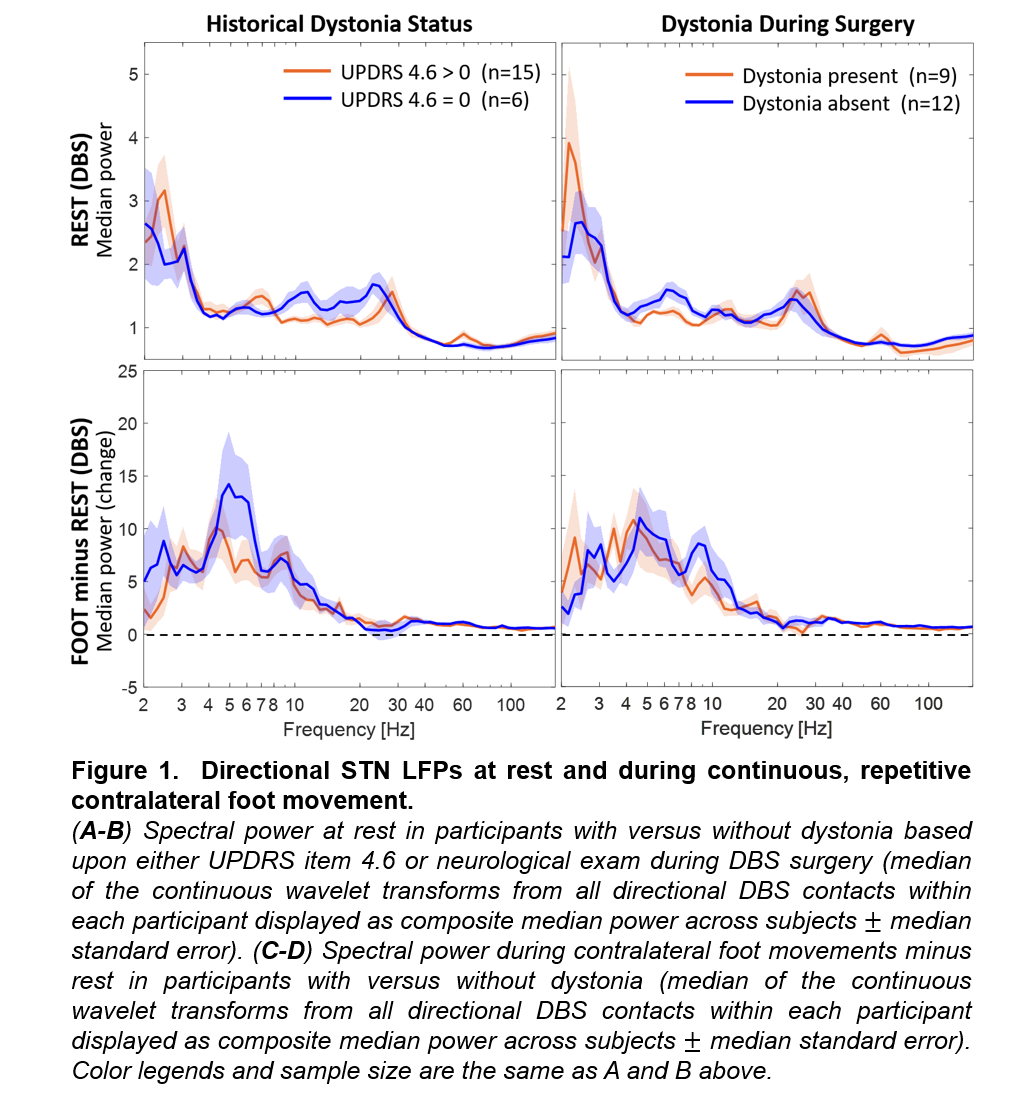Category: Parkinson's Disease: Neurophysiology
Objective: To investigate subcortical brain oscillations at rest and during contralateral foot movements in PD patients with and without dystonia.
Background: Dystonia is a painful, under-recognized motor feature of Parkinson’s disease (PD) which often initially affects the foot. Although efforts have focused on understanding brain oscillations related to bradykinesia, whether dystonia is associated with specific electrophysiological features is unclear. Greater knowledge about dystonia pathophysiology could guide new therapy approaches with closed-loop and directional devices.
Method: We examined the prevalence and clinical characteristics of dystonia in PD patients undergoing DBS therapy. During surgery, we recorded local field potentials from directional DBS electrodes in the subthalamic nucleus (STN) region at rest and during repetitive contralateral foot movements. We analyzed these signals with continuous wavelet transforms and contrasted activity at rest and during foot movements in patients with versus without dystonia using power analyses, event related spectral perturbations, connectivity metrics, and other signal processing measures.
Results: Dystonia was highly prevalent at enrollment (19/31, 61%) and most commonly manifested initially in the foot (17/19, 89%). Despite this, we only observed dystonia in a subset of participants who underwent surgery (9/21, 43%). Regardless of dystonia status, repetitive contralateral foot movements elicit broadband increases in low frequency STN power (an increase of 10.6 ± 10.7, p<0.001, paired t-test) with peak frequency in the theta range at 4.9 ± 0.8 Hz (mean ± SD) [figure1]. Despite considerable efforts, we have not detected consistent differences in intraoperative STN spectral power at rest or during movements in PD patients with versus without dystonia, although we observed trends towards increased delta power in some patients with dystonia [figure1].
Conclusion: Repetitive voluntary movements of the contralateral foot increase theta frequency power versus rest in PD patients with and without dystonia. Changes in STN theta power could conceivably serve as a control signal to identify the use of the lower extremities in a future closed-loop DBS system.
To cite this abstract in AMA style:
A. Nakhmani, C. Hurt, D. Kuhman, M. Wade, J. Olson, B. Guthrie, H. Walker. Subcortical spectral perturbations during foot movements in PD patients with and without dystonia [abstract]. Mov Disord. 2021; 36 (suppl 1). https://www.mdsabstracts.org/abstract/subcortical-spectral-perturbations-during-foot-movements-in-pd-patients-with-and-without-dystonia/. Accessed January 7, 2026.« Back to MDS Virtual Congress 2021
MDS Abstracts - https://www.mdsabstracts.org/abstract/subcortical-spectral-perturbations-during-foot-movements-in-pd-patients-with-and-without-dystonia/

